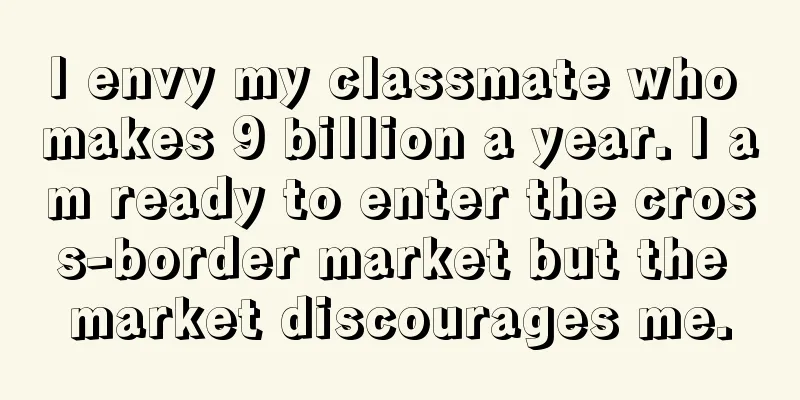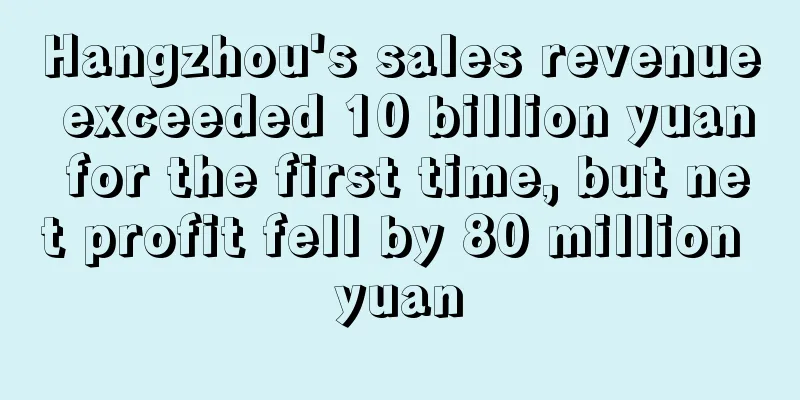I envy my classmate who makes 9 billion a year. I am ready to enter the cross-border market but the market discourages me.

|
Careful observers will find that in previous years, sellers have already started preparing for the peak shopping season in the second half of the year in August, actively preparing and replenishing goods, and sea freight has ushered in a peak in shipments, and logistics costs have risen sharply. However, this year is not following this routine. Sea and air freight are queuing up to reduce prices, and sellers are not very enthusiastic about preparing goods.
Many people previously believed that due to the unsatisfactory performance in the first and second quarters, sellers would pin their hopes on the peak season in the second half of the year, hoping to make a comeback in the next two quarters. But now it seems that this is not the case, and the problem mainly focuses on the backlog of inventory.
Some sellers have warned that overseas retailers have serious inventory backlogs, so they should be cautious in stocking up for this peak season, control cash flow, and rather make less money than take risks. In addition, clearing inventory is still the main theme this year, especially now should be the time to stock up for Christmas products, but according to feedback from many sellers, last year due to logistics delays, their products missed the sales opportunity and many of them were not sold out.
As sellers reduce their shipments, it will be difficult for logistics service providers to receive goods in the market. Channel prices are driven by demand. As shipments decrease, prices for channels such as sea and air freight will naturally fall. This is the market situation we are currently seeing.
Since the beginning of this year, sellers and service providers have been under pressure, with business volumes plummeting and many going bankrupt. This pressure has been transmitted to the investment side. From the first half of this year, the total amount of capital invested in the cross-border e-commerce industry has fallen by more than 60% year-on-year, and the investment direction has also been adjusted. Those who were enthusiastic last year and wanted to enter the industry and make a big splash were quickly persuaded to withdraw and return to their old business.
Financing amount in the first half of the year dropped by 60% year-on-year. Is cross-border e-commerce no longer popular?
Some economic experts believe that inflation is already deeply rooted in the global economy, and it is still unknown whether the situation will improve in the second half of 2022.
At present, the world is in an era of high inflation, especially in some developed countries. Under high inflation, overall spending has weakened and has increasingly shifted to necessities such as groceries, while abandoning non-essential items such as household goods, casual clothes and electronic products. In addition, in the United States, in recent months, people have been shifting their purchases from physical goods to services, such as travel, hotel accommodation and air tickets.
Cross-border sellers are most sensitive to changes in the consumer side, especially for trade-oriented sellers with weaker risk resistance. The impact of declining consumption is devastating. As a result, in the first half of this year, many sellers have laid off employees, reduced their scale, and bankruptcies are not uncommon.
A few days ago, a seller said that in recent exchanges with peers, he found that 90% of them have reduced their teams. The few who have hired a few people are also because their category products have exploded. The overall environment is not good, and sellers have begun to operate in a flat-line manner in order to maintain stability, giving up or reducing the development of new products and opening new stores, and selling at low prices to collect payments. The goal is to survive and survive this "winter".
The industry's cold reception has directly halted capital investment. Compared with last year's overwhelming financing news, capital investment enthusiasm has dropped precipitously in the first half of this year.
Not long ago, the E-Commerce Research Center of the China Internet Network Information Center released the " Cross-border E-commerce Financing List in the First Half of 2022". According to the list data, in the first half of this year, there were 24 financing events in the cross-border e-commerce field , with a total financing amount of more than 2.81 billion yuan.
Although the number of financing cases is not much different from last year, the total investment amount is far behind. In the first half of 2021, there were 29 cross-border e-commerce financing events with a total financing amount of 7.81 billion yuan.
Judging from the data from the above two years, the total amount of financing this year has plummeted by more than 60% compared with last year.
Moreover, Een.com observed that service providers are particularly favored by capital, while their investment on the seller side is much more cautious. According to the list information, in the first half of 2021 and the first half of 2022, most of the financing occurred in the service provider field, of which 19 in the first half of 2021 accounted for 66%, and 20 in the first half of 2022 accounted for 83%, an increase of 17% year-on-year.
At the same time, the largest financing amount of US$150 million in the first half of 2022 also occurred in the service provider field.
However, financing in the export e-commerce sector decreased from 7 cases (24%) in the first half of 2021 to 3 cases (13%) in 2022, a year-on-year decrease of 11%.
It can be seen that in the industry's "cold winter", capital's enthusiasm for pursuing service providers has not decreased but increased, but investment in sellers has become conservative.
Industry insiders analyzed that there are two main reasons for the different investment enthusiasms in the seller field and the service provider field. On the one hand, during the Amazon account ban last year, sellers with capital investment were hit one after another, and the investment risk on the seller side became higher. On the other hand, service providers have technological value or data value.
It is now inevitable that capital investment on the seller side will decrease. At least from what has been observed so far, trade sellers are no longer favored by capital because such sellers often have lower risk resistance and are more affected by the market environment.
While capital investment on the seller side was frustrated, those prospective newbies who were eager to enter the industry and make money were also discouraged.
Recently, Yien.com found some people who expressed their desire to engage in cross-border e-commerce last year to understand their current situation, but got a surprising answer: none of them joined the game, and all said that the unpredictable business environment discouraged them.
"Later, the market changed significantly and the project was suspended." One of them told Ennet. The first contact was in April last year. At that time, he was full of confidence: "A classmate made 9 billion last year. After discussing with my friends, I planned and established the project. Now I want to do further research to see if there is still a chance and whether it is too late to enter the market." He came from the financial industry and believed that although the industry spans a large area, the business logic is applicable. As long as you are willing to learn humbly in the early stage, it is not difficult to enter the industry.
The same was true for another person who came into contact with the company during the same period. At that time, he made a lot of preparations to understand cross-border e-commerce, such as joining groups, browsing forums, and participating in activities... But in the end, he was still succumbed to the phrase "the environment is not optimistic."
Some service providers feel this more strongly. Recently, a service provider that provides VAT and patent services said that many people are just looking at the market and not entering it. There are obviously more people who come to consult but say they will not do it this year.
Some sellers also said that now all costs are high and the environment is not good. If you plan to enter the market this year, 80 to 90 percent will give up in the end.
The current situation of cross-border e-commerce, how investors view it
It was mentioned above that capital has reduced investment on the seller side. In fact, it has not decreased, but the focus is no longer simply on trade sellers. Instead, the focus is broader and focused on value-oriented enterprises.
The same is true for Hongzhang Capital, which has long been paying attention to the cross-border e-commerce industry and has invested in many overseas-related companies. Its executive director Wu Di told Yien.com that they currently evaluate companies based on the three value dimensions of channel expansion, product expansion, and brand expansion. Among them, they prefer companies that have accumulated strength over time , follow the laws of corporate development, forget about financing drive, and do not just focus on cross-border e-commerce in a narrow sense, but fully embrace the theory of self-sustaining, and interpret overseas expansion more broadly, ToB+ToC, online+offline, supply+brand, incubation+acquisition, and diversify to build the company's defense line (cash flow business) and assault trench (value-based business).
At the same time, he also said that cross-border e-commerce is a branch and phased path for Chinese companies to go overseas. It will definitely go through several stages: rough product exports, refined supply chain exports, and brand exports. It’s just that the time to achieve the ideal achievements of these stages varies. At present, it should be in the process of transition from the first stage to the second stage.
"It is undeniable that in the past two years, multiple risk factors such as national political games, tariffs, and logistics seem to have become more prominent, but this is just a process of industry reshuffle. The difference in the basic internal strength of companies in a periodic downturn is more obvious. Excellent companies can survive the cycle and the 'survivors' will be the winners. "
However, different companies have different resource endowments, and not every seller has the ability to transform from a trading model to a value-oriented model. Therefore, some sellers hope to break through the current industry difficulties through emerging platforms or emerging markets. Wu Di also agrees with the approach of these sellers: "Under extreme conditions, shrinking the front line, lowering growth, and even negative growth for the sake of corporate safety are all normal and reasonable in my opinion. When you are tired, just take a break. We often say that when the chess game reaches the middle game, the most important thing is not to leave the table . "
"At present, whether it is the richness of commodity supply, the crowding of participants, or the overall online acceptance, we have actually entered the second half of the industry, which is what we call dividend differentiation. The dividends of this period belong only to a part of the top sellers. These sellers have a sound product research and development system, in-depth and complete supply chain construction, compliant operating methods, cutting-edge logistics and warehousing resource scheduling capabilities, sensitive information systems and a certain brand awareness, but they only account for a small part.
It is actually difficult for the remaining large groups to fight against the decline in dividends. The most direct way is to use the time machine theory, not changing their current business system, but switching to a potential dividend market. "
However, facing the current sluggish market environment, some people are still confused about the future of cross-border e-commerce. Wu Di bluntly stated that cross-border e-commerce is only a branch path for future enterprises to go overseas, a subset. Generally speaking, there are only three paths:
The first is a purely horizontal path, which uses the completeness of IT and the breadth of the supply chain to expand local e-commerce around the world, and penetrates in a capillary form. The main contradiction is efficiency. In the long-tail market, it strives to match the efficiency of procurement, delivery, and sales (accelerate the flow rate) and internal labor efficiency (reduce costs). It is suitable for low-priced, weakly related, and weakly branded products.
The second is the vertical path , which is to find an absolute product commanding height in a medium-to-large market, and build channel and brand advantages starting from supply chain and R&D advantages. This is a high-investment, high-output approach, seeking market share in the top market. When necessary, capital can be used to accelerate monopoly through acquisitions to form a better premium. This is suitable for functional, high-priced, and decision-making products.
The third is the scenario-based approach , which is to find a product that can accommodate a higher product density and then use the main product to link the surrounding areas, such as smart home, breastfeeding, outdoor leisure, etc. It is necessary to maintain horizontal sensitivity and multi- SKU management capabilities, as well as vertical moderate product research and development, to build an average 70-point product palette.
"In fact, facing the global market, we see that no matter which path is taken, a medium-sized leader with a revenue of more than 3 billion can emerge." Wu Di said that what sellers need to do is to decide the development path that suits them based on their own genes (operational, opportunity, product, supply).
Capital is sensitive to changes in the industry. Een.com has observed that in addition to a significant change in investment direction on the seller side, capital has also significantly increased its attention to independent sites. For example, in the first quarter of this year, independent site-related companies, including DTC brands and website building tools, have received significantly more financing. In this regard, Wu Di believes that this is largely driven by Amazon's purge. The uncertainty of the Amazon platform will prompt Chinese sellers to embrace DTC channels more quickly to seek a sense of security. However, it only represents the market sentiment at a certain stage. The capital reserves behind the financing time, expectations for the project, and valuations are still somewhat frothy. We need to look at this turbulence objectively and rationally. It is actually difficult to earn excess returns in crowded places.
As sellers embrace emerging markets, they also need to pay attention to new changes
When it comes to emerging blue ocean markets, most sellers will focus on Southeast Asia and Latin America. Not only do small and medium-sized sellers generally believe that these two regions have more opportunities to break through, but some leading sellers have already made plans.
However, new markets are always undergoing new changes. For example, in Latin America, Mexico is experiencing explosive potential, while growth in Brazil, where competition is fierce and giants such as SHEIN are competing, is slowing down.
Not long ago, the largest e-commerce platform in Latin America, Meikeduo, revealed the above trend when it released its second-quarter financial report. Its chief financial officer said that the Mexican business has achieved profitability for the first time since its establishment five years ago. At the same time, the growth of Brazil, Meikeduo's largest market, has slowed down due to the slowdown in e-commerce growth driven by the epidemic, the expansion of Shopee and SHEIN, and intensified competition.
Mexico is the 16th largest e-commerce market, with revenue of $23.2 billion in 2021, ahead of the European country of the Netherlands . In Latin America, Mexico is also the second largest e-commerce market after Brazil.
According to AMIPCI e IAB Mexico, the average Mexican spends 7 hours and 14 minutes a day using the internet, 1 hour and 3 minutes longer than last year. Not only are Mexican internet users increasingly exposed to international goods, but owning multiple internet-accessible devices such as laptops, tablets and smartphones is becoming the norm. In other words, the near future of the Mexican e-commerce market is booming.
It is reported that in 2020, the COVID-19 pandemic greatly promoted the growth of e-commerce in Mexico. Although physical retail sales fell by 5.1%, online sales increased by 65% year-on-year. Mexico has six peak online shopping seasons: Mother's Day in May, promotional sales in June, hot fashion sales in August, Cyber Monday and El Buen Fin Shopping Festival in November (Mexico's response to Black Friday), and Christmas in December.
The most common items purchased online by Mexicans are technology products and medicines. For cross-border e-commerce, most products under $50 are exempt from import taxes.
The largest player in Mexico's e-commerce market is Amazon, with revenue of $2.6 billion in 2021. It is followed by SHEIN and Liverpool, which ranked second and third with revenues of $918 million and $911 million, respectively. In total, these three companies account for 20% of Mexico's online revenue. However, the fastest growing one is Steve Madden, which achieved approximately $2.3 million in online net sales in 2021, and its revenue increased by 237% last year.
According to Statista, Mexico's e-commerce will grow at a compound annual growth rate of 4% over the next four years (CAGR 21-25). Although not comparable to the 18% annual growth rate from 2020 to 2021, an indicator of growth potential is Mexico's 36% online penetration rate, in other words, in 2021, 36% of Mexicans purchased at least one product online.
In terms of consumer habits, electronics and media are the largest segment in Mexico, accounting for 30% of Mexico’s e-commerce revenue. It is followed by fashion (25%), toys, hobbies and DIY (18%), furniture and appliances (16%), and food and personal care (10%).
Specifically, personal electronics was the largest category consumed by Mexicans in 2016, with a market expenditure of $2.9 million. By 2020, fashion will surpass personal electronics, generating $4.9 million in e-commerce revenue.
It is understood that the most popular search engines among Mexicans are Google ( 94.86%), Bing (3.31%), Yahoo! (1.64%), MSN (0.08%), DuckDuckGo (0.06%), and Ask Jeeves (0.02%).
It is reported that social media is very popular in Mexico, especially among people aged 20 to 30, 96% of whom use at least one social media platform. Mexico is Facebook's fifth largest market in the world, with 50 million users, and Instagram and Pinterest are also growing rapidly. The most popular social networks are Facebook (75.6%), Pinterest (9.98%), Twitter (5.46%), YouTube (5.06%), Instagram (1.84%), and Tumblr (0.67%). Cross-border e-commerce |
>>: No orders for 4 hours! Is there another bug in Amazon backend?
Recommend
Protective equipment caused infringement, and some sellers’ stores have been frozen
As the haze gets worse, people's desire for f...
What is JSH? JSH Review, Features
Jiashenghong is the market brand of Shenzhen Jiash...
What is AMALYZE? AMALYZE Review, Features
<span data-docs-delta="[[20,{"gallery"...
Amazon launches Returns Vendor Program to help sellers process returns
Recently, Amazon announced the launch of the Retu...
What is Seller Interactive? Seller Interactive Review, Features
<span data-docs-delta="[[20,{"gallery"...
Suddenly! Another Amazon best-selling product was suspended
Generally speaking, when cross-border enterprises...
What is AllPay? AllPay Review, Features
Founded in October 2015, AllPay is a third-party p...
The global wedding boom continues, and the "sweet economy" on eBay platform contains huge business opportunities
The turn of summer and autumn is the peak season ...
Shopee's 11.11 promotion kicks off, with cross-border orders increasing 18 times in the first two hours
The leading e-commerce platform Shopee's 11.1...
What is COSCO SHIPPING LINES Co., Ltd.? COSCO SHIPPING LINES Co., Ltd. Review, Features
COSCO SHIPPING Lines Co., Ltd. (COSCO SHIPPING Lin...
What is Su Shang College? Review, Features
<span data-docs-delta="[[20,{"gallery"...
Black Friday is over! Many sellers are hurt by the profit
This year's Black Friday Cyber Monday promo...
What is UYOU LOGISTICS INC.? UYOU LOGISTICS INC. Review, Features
UYOU LOGISTICS INC. overseas warehouse, located in...
Amazon sellers, use your brand logo correctly!
Amazon brand campaign promotion is the Amazon hea...









